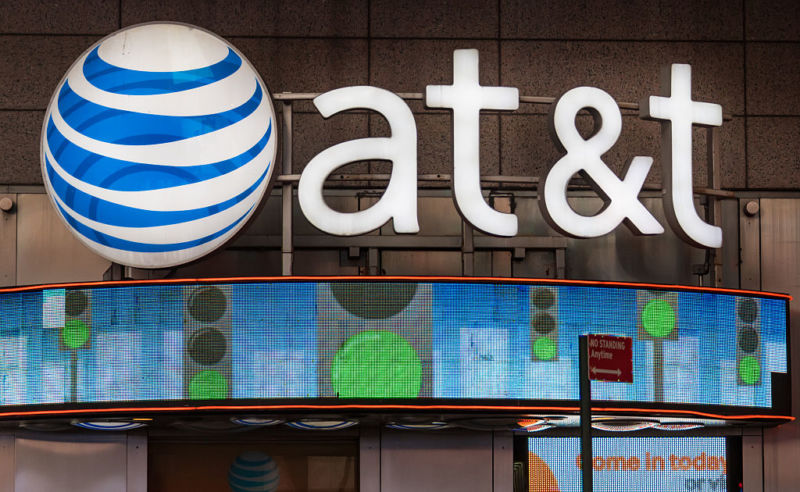

reader comments
181 with 136 posters participating
AT&T CEO John Stankey said the company may offer cellphone plans subsidized by advertising, giving customers monthly discounts of $5 or $10 in exchange for ads on their phones. “I believe there’s a segment of our customer base where given a choice, they would take some load of advertising for a $5 or $10 reduction in their mobile bill,” Stankey said in an interview with Reuters yesterday. Stankey apparently didn’t offer details on what form the ads would take.
According to Reuters, Stankey said that AT&T’s ad-supported phone plans could be introduced in “a year or two.” AT&T is already doing back-end work in its targeted-advertising system that could increase the value of such plans to AT&T’s ad-sales business:
AT&T engineers are creating “unified customer identifiers,” Stankey said. Such technology would allow marketers to identify users across multiple devices and serve them relevant advertising.
The ability to fine-tune ad targeting would allow AT&T to sell ads at higher rates, he said.
Stankey also said that a planned ad-supported version of HBO Max would play an important role in ad-supported phone plans, but he didn’t offer further details, according to Reuters.
“Various companies including Amazon, Virgin Mobile USA, and Sprint’s Boost Mobile have tested advertising-supported phone services since the early 2000s but they have not caught on. AT&T is hoping that better advertising targeting could revive the idea,” Reuters wrote.
AT&T used to charge $29 to $60 extra for privacy
AT&T’s CEO may be right that some customers would accept ads in exchange for discounts, though many of those would be people with low incomes who can barely afford phone service in the first place. AT&T does offer subsidized plans to people with low incomes through the US government’s Lifeline program, but AT&T’s website says its Lifeline wireless plans are only available in 13 of the 50 US states, and only in “certain areas” of those states.
AT&T has a controversial history of putting targeted ads on Internet service in exchange for discounts. In 2015, AT&T offered a $70-per-month gigabit home-Internet plan, but that price was only available to customers who agreed to let AT&T analyze their Web browsing histories in order to deliver targeted ads. Customers who didn’t opt in to the traffic-scanning program that AT&T called “Internet Preferences” had to pay $99 a month instead. With some bundled plans that included broadband along with TV or phone service, the extra cost for the more private plan was over $60 a month.
AT&T ended the Internet Preferences program entirely in September 2016, but that wasn’t the end of AT&T’s plans to deliver ads based on its users’ browsing histories. In June 2018, for example, AT&T announced it was buying an advertising company that delivers personalized ads based on Internet users’ Web browsing habits and then combined the new subsidiary with AT&T’s existing advertising and data-analytics businesses.
Trump killed broadband-privacy rule
AT&T’s much bigger purchase of Time Warner Inc. provided even more capabilities for joining AT&T’s telecom services with entertainment and advertising. When pitching the acquisition to government officials in 2017, AT&T said that “more relevant advertising in ad-supported video services” would be one of the merger’s primary benefits. In testimony to Congress in December 2016, then-CEO Randall Stephenson said: “We expect to deliver mobile-optimized content and services, and ad-supported services that shift more costs from consumers to advertisers.”
The Obama-era Federal Communications Commission tried to impose limits on telecoms’ use of personal data for advertising, with a rule requiring ISPs to get opt-in consent from consumers before using or sharing Web browsing data and other private information. But early in 2017, the Republican-controlled Congress and the Trump administration killed the rule before it could take effect.
What customers really want
The merging of ads and phone plans is perhaps an inevitable outcome of telecom companies buying up media and advertising businesses, even though saddling essential telecom services with more advertising is not something customers are asking for.
AT&T could really help US customers by expanding its fiber-to-the-home network to Americans who lack modern broadband, which is another topic that came up in the Reuters interview. (More fiber builds would also benefit AT&T’s mobile network, particularly in rural areas.) Stankey said that “AT&T believes it could double its fiber footprint if it had the economic incentive,” Reuters wrote.
Stankey also called for more government broadband funding in an opinion piece published in Politico last week. This continues a history that includes Stankey’s predecessor Stephenson saying in 2017 that AT&T would use a corporate tax break to create 7,000 jobs for “people putting fiber in [the] ground.”
Since then, AT&T has largely stopped fiber expansions, reduced capital expenditures on its networks, and laid off tens of thousands of employees. AT&T is also not participating in the Federal Communications Commission’s Rural Digital Opportunity Fund (RDOF), which is set to award up to $16 billion in grants to ISPs that expand broadband service. But at least AT&T mobile customers might get a chance to save $5 a month in exchange for targeted ads.


